
Coconut water (liquid endosperm), the clear liquid found inside young, green coconuts (Cocos nucifera), is a naturally refreshing beverage rich in electrolytes, vitamins, and minerals, often consumed for its hydrating properties. While enjoyed by many in its pure form, some find its taste too bland or sweet. Enhancing the flavor of coconut water involves adding complementary ingredients like citrus, herbs, fruits, or spices to balance sweetness, add complexity, and create a more enjoyable drinking experience.
This practice offers the benefit of increased palatability, making coconut water more appealing to a wider range of tastes. Additionally, incorporating fruits and spices can provide a nutritional boost by adding extra vitamins, antioxidants, and other beneficial compounds. However, it’s important to be mindful of potential drawbacks. Some methods, like using sweetened juices or syrups, can increase the sugar and calorie content. Moreover, introducing new ingredients may trigger allergies in some individuals.
Making the coconut water taste better opens up a world of possibilities for a customized and flavorful hydration experience, but it’s important to consider individual preferences and dietary needs. These are the 12 ways to make coconut water taste better.
- Chill It Down
- Squeeze in Citrus
- Mix It With Juice
- Freeze It
- Make It Bubbly
- Infuse With Tea
- Sweeten It Naturally
- Spike It With Salt
- Mix With Other Milk Alternatives
- Use It in Cooking
- Make Chia Seed Pudding
- Garnish With Edible Flowers
1. Chill It Down

Coconut water is a refreshing and hydrating drink, especially on a hot summer day. However, it can be bland and tasteless if not chilled properly. In this section, we will discuss how to chill coconut water to make it taste better. Chilling coconut water means reducing its temperature to a certain level to enhance its taste and refreshment. The ideal temperature for chilled coconut water is between 32-40°F (0-4°C).
Chilling coconut water is important because it enhances the overall drinking experience. Cold coconut water is more refreshing and hydrating than warm coconut water. It also tastes better when chilled, making it a perfect drink for hot summer days.
Here are the steps to chill coconut water to make it taste better:
- Pour the coconut water into a clean, airtight container.
- Add ice cubes to the container and mix well.
- Place the container in the refrigerator for at least 30 minutes or until it reaches the desired temperature.
- Once chilled, pour the coconut water into a glass and enjoy.
Extra Tips
- Do not freeze coconut water. Freezing can damage the taste and texture of the drink.
- Do not add too many ice cubes to the coconut water as it can dilute the taste.
- Use airtight containers to prevent the coconut water from absorbing any odors or flavors from the refrigerator.
By following these simple steps, you can make your coconut water taste better and more refreshing.
2. Squeeze in Citrus
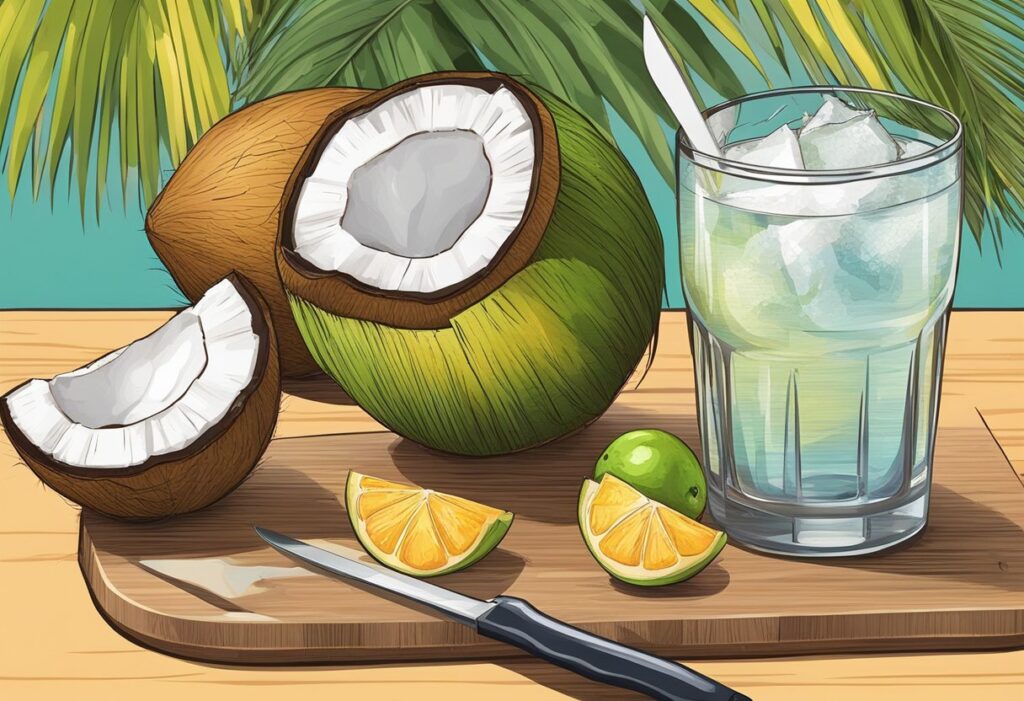
One of the easiest ways to add flavor to coconut water is to squeeze in some citrus. Citrus fruits like lemon, lime, and orange are great options for adding a burst of flavor to your coconut water. Not only do they add flavor, but they also add some nutritional value as well. To make your coconut water even more flavorful, try blending it with some citrus juice. For example, you can blend coconut water with lemon juice or lime juice for a refreshing and flavorful drink. You can also add some oranges or grapefruit to the mix for a more complex flavor.
To blend your coconut water with citrus juice, simply add the juice to your coconut water and blend it up. You can use a blender or a handheld immersion blender to do this. Make sure to blend the mixture until it is smooth and well combined. If you want to add some depth and complexity to your coconut water, try adding some spices. Cinnamon, turmeric, and nutmeg are all great options for adding some flavorful spice to your coconut water.
To add spices to your coconut water, simply mix them in with your coconut water and citrus juice. You can start with a small amount of spice and adjust to taste. Be careful not to add too much spice, as it can quickly overpower the flavor of your drink.
Extra tip: When adding citrus juice to your coconut water, make sure to strain out any pulp or seeds. This will help ensure that your drink is smooth and enjoyable to drink.
3. Mix It With Juice

One of the easiest ways to make coconut water taste better is to mix it with fruit juice. This not only adds flavor but also increases the nutritional value of your drink. You can choose any fruit juice that you like, but some of the best options are pineapple juice, orange juice, and other tropical fruit juices.
If you want to take your coconut water and fruit juice mix to the next level, try muddling in some herbs like mint or basil. This will add a refreshing and aromatic touch to your drink. Simply take a few leaves of mint or basil and muddle them in the bottom of your glass before adding the coconut water and fruit juice mixture.
To mix coconut water and juice, follow these simple steps:
- Choose your favorite fruit juice and pour it into a glass.
- Add an equal amount of coconut water to the juice in the glass.
- Stir the mixture well to combine the flavors.
- If desired, muddle in some fresh herbs like mint or basil for added flavor.
When mixing coconut water and juice, it’s important to keep in mind that some juices may be too acidic and can overpower the taste of the coconut water. Pineapple juice, for example, is a great option as it complements the flavor of coconut water well. However, orange juice may be too acidic and can make the drink taste sour.
To avoid this, start with a small amount of juice and gradually increase the amount until you find the perfect balance of flavors. Additionally, make sure to choose 100% natural fruit juices without any added sugars or preservatives for the healthiest option.
4. Freeze It
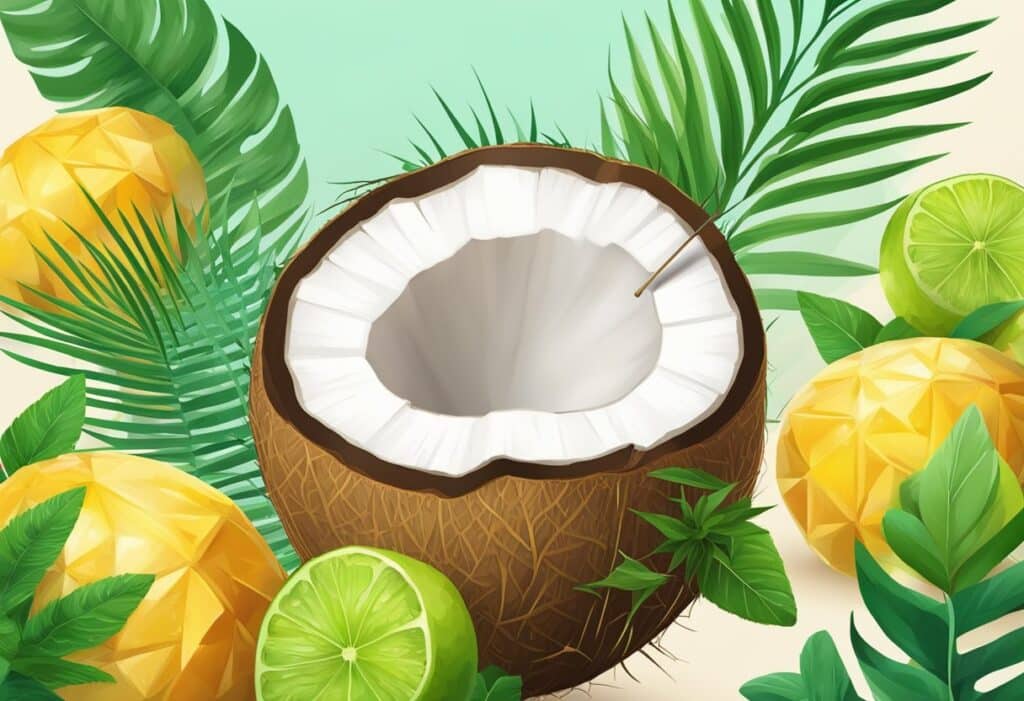
Freezing coconut water is a great way to make it more enjoyable to drink, especially during the hot summer months. By freezing the water, you can turn it into a refreshing slushie or use it to make ice cubes to add to your favorite drinks.
Freezing coconut water is also a great way to extend its shelf life. According to a study published in Acta Horticulturae, freeze-drying coconut water can produce a fine, white powder with the aroma of fresh coconut juice. The powder can then be reconstituted with water to create a tasty drink.
To freeze coconut water, simply pour it into ice cube trays or a freezer-safe container and place it in the freezer. Once frozen, you can use the coconut water ice cubes in smoothies or other drinks to add a refreshing coconut flavor.
If you want to make a coconut water slushie, simply blend the frozen coconut water cubes in a blender until they are the desired consistency. You can also add other fruits or sweeteners to the slushie for added flavor.
It’s important to note that freezing coconut water can change its texture and taste. The texture may become slightly grainy, and the flavor may be less sweet than fresh coconut water. To avoid these issues, it’s best to consume the frozen coconut water within a few weeks of freezing.
Extra Tip: Do not freeze coconut water in its original packaging, as it may expand and burst. Instead, transfer the coconut water to a freezer-safe container before freezing.
5. Make It Bubbly
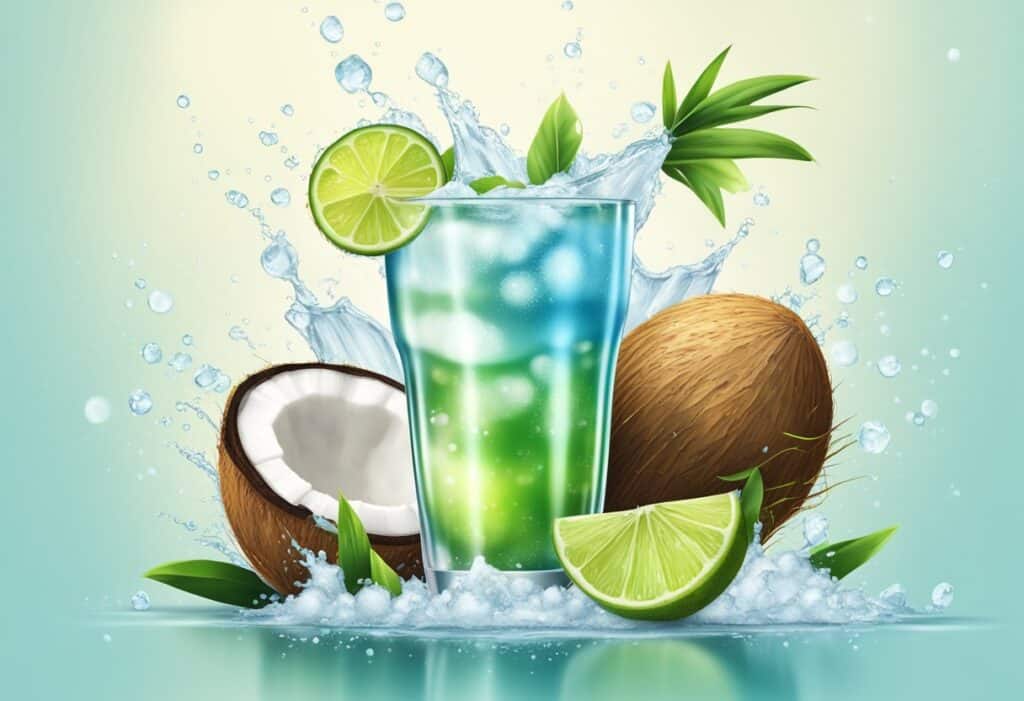
Adding carbonation to coconut water can make it more enjoyable to drink, especially if you find plain coconut water too bland. Carbonated water can be a great alternative to soda, as it is low in calories and sugar. Club soda and sparkling water are two popular carbonated water options that can be used to add bubbles to your coconut water.
Club soda is a carbonated water that contains added minerals, such as sodium bicarbonate, sodium citrate, and potassium sulfate. It has a slightly salty taste and can be used to add fizz to your coconut water without altering its flavor. Sparkling water is carbonated water that is naturally or artificially infused with carbon dioxide gas. It is typically free of added minerals and has a neutral taste. Sparkling water can be used to add bubbles to your coconut water without affecting its taste.
Adding carbonation to your coconut water can make it more refreshing and enjoyable to drink. It can also be a great alternative to sugary drinks, as carbonated water is low in calories and sugar.
To make your coconut water bubbly, simply pour it into a glass and add a splash of club soda or sparkling water. You can adjust the amount of carbonated water to your liking, but a 1:1 ratio of coconut water to carbonated water is a good place to start.
Extra tips
- Do not add too much carbonated water, as it can overpower the flavor of the coconut water.
- Make sure your carbonated water is cold before adding it to your coconut water for maximum fizz.
- You can also use carbonated water as a mixer for cocktails made with coconut water.
6. Infuse With Tea
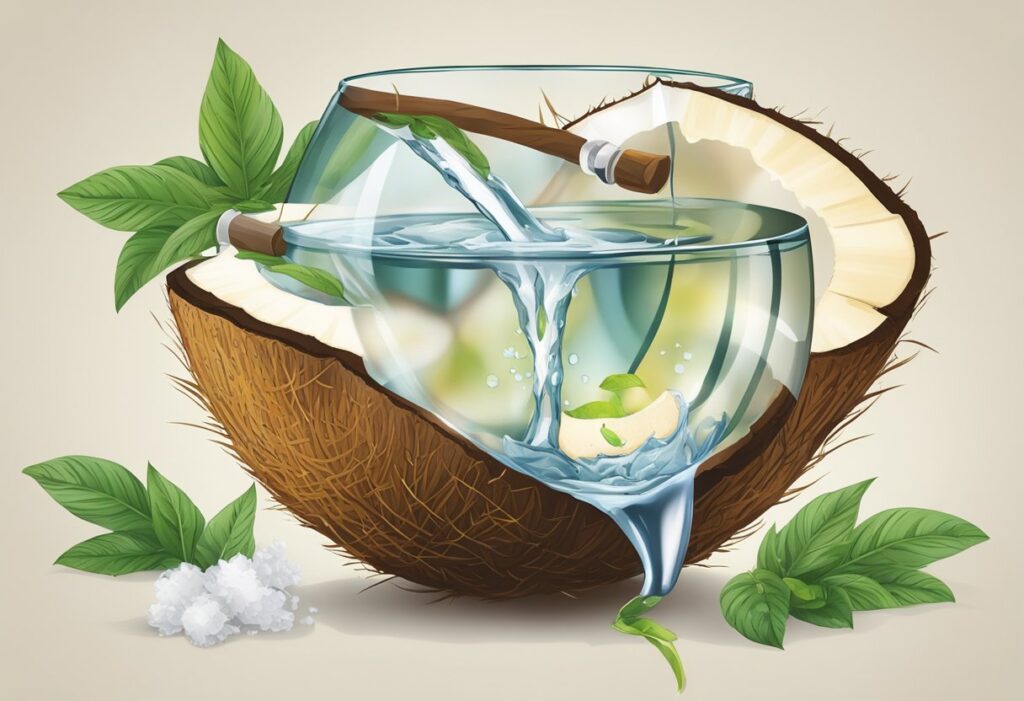
Infusing coconut water with tea can add a unique flavor to it, making it more refreshing and enjoyable. Tea is a great way to add a variety of flavors to your coconut water, and it is easy to do. To infuse coconut water with tea, you will need to brew your favorite tea first. You can use any tea you like, whether it is black tea, green tea, or herbal tea. Once the tea is brewed, let it cool down to room temperature.
Next, mix the tea with the coconut water. You can use a 1:1 ratio of tea to coconut water, or adjust it to your liking. Stir well to ensure that the tea is evenly mixed with the coconut water. You can also add some sweetener to the mixture, such as honey or agave nectar. This will enhance the flavor of the tea and make it more enjoyable to drink.
Extra tips:
- Avoid using too much tea, as it can overpower the flavor of the coconut water.
- Be careful not to add too much sweetener, as it can make the drink too sweet.
- Experiment with different types of tea to find the flavor that you like best.
Infusing coconut water with tea is a simple and easy way to add flavor to your drink. Give it a try and see how it can make your coconut water more refreshing and enjoyable.
7. Sweeten It Naturally
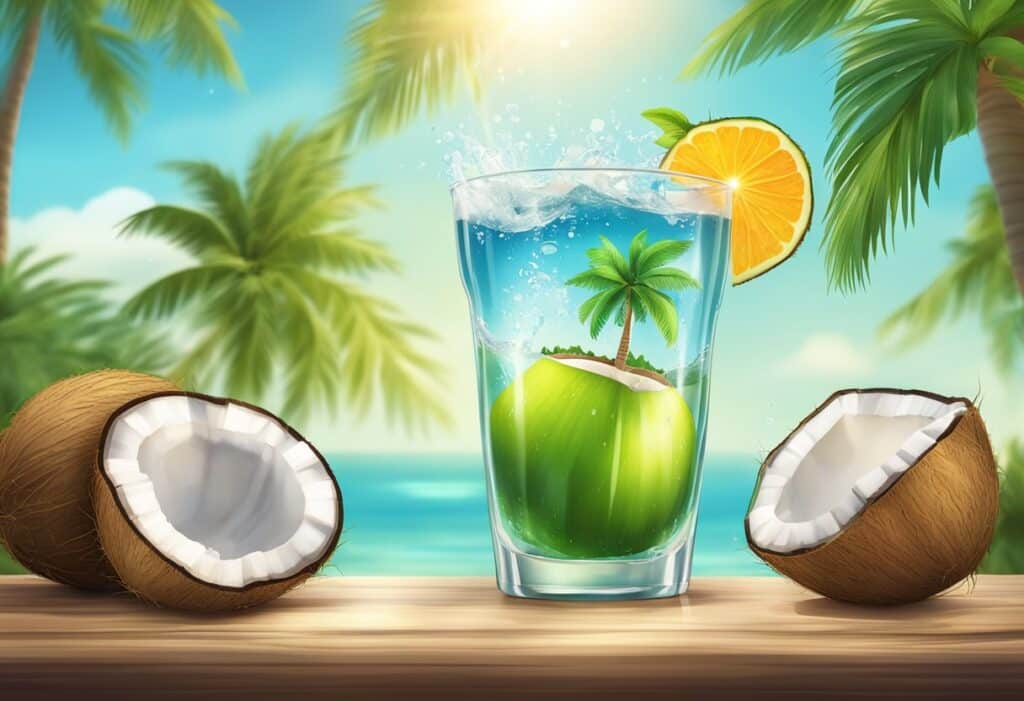
Coconut water is a refreshing and hydrating drink that is packed with essential nutrients. However, some people find its natural taste bland or unappealing. If you are one of those people, don’t worry! There are many natural ways to sweeten coconut water without adding refined sugar or artificial sweeteners. Sweeten It Naturally is the process of adding natural sweeteners to coconut water to enhance its taste. These natural sweeteners include honey, berries, pineapple, maple syrup, agave nectar, and stevia. The sweetness level varies depending on the type of sweetener used. For example, honey is sweeter than maple syrup, while stevia is much sweeter than sugar.
Sweeten It Naturally is important because it allows you to enjoy the health benefits of coconut water without compromising on taste. Coconut water is naturally low in sugar, making it an ideal drink for people who are trying to reduce their sugar intake. By sweetening coconut water naturally, you can enjoy a delicious and healthy drink without consuming excess sugar.
Here are some simple steps to sweeten it naturally:
- Start with fresh and chilled coconut water. You can either buy fresh coconuts and extract the water yourself or purchase packaged coconut water from the store.
- Choose your preferred natural sweetener. You can use honey, berries, pineapple, maple syrup, agave nectar, or stevia. Add a small amount of sweetener at a time and taste the coconut water to adjust the sweetness level to your liking.
- Mix the sweetener well with the coconut water. You can use a spoon or a blender to mix the sweetener evenly.
- Serve the Sweeten It Naturally coconut water chilled and enjoy!
Extra Tips
- Do not add too much sweetener as it can overpower the natural taste of coconut water and make it too sugary.
- Use natural sweeteners instead of refined sugar or artificial sweeteners to avoid consuming excess sugar.
- Berries and pineapple are excellent choices for adding natural sweetness and flavor to coconut water.
- If you are using honey, make sure it is raw and unprocessed to retain its natural nutrients.
- Stevia is a calorie-free and sugar-free sweetener that is ideal for people who are trying to lose weight or manage their blood sugar levels. However, it is much sweeter than sugar, so use it sparingly.
8. Spike It With Salt

Adding a pinch of salt to your coconut water can enhance its flavor and make it more refreshing. Salt contains electrolytes and minerals that can help replenish your body’s lost nutrients. In fact, a study published in the Journal of the International Society of Sports Nutrition found that adding salt to a sports drink improved hydration and endurance performance in athletes.
To spike your coconut water with salt, simply add a pinch of salt to your glass of coconut water and stir until the salt has dissolved. Start with a small amount of salt and add more to taste, as too much salt can make your drink too salty. It’s important to note that not all salts are created equal. Table salt, for example, is highly processed and may contain additives such as anti-caking agents. Instead, opt for natural salts such as sea salt or Himalayan salt, which are minimally processed and contain trace minerals that can benefit your health.
Extra tips:
- Don’t add too much salt. A pinch is enough to enhance the flavor and provide the benefits of electrolytes and minerals.
- Avoid using highly processed salts such as table salt, which may contain additives that can be harmful to your health.
- If you’re watching your sodium intake, consult with your healthcare provider before adding salt to your coconut water.
9. Mix With Other Milk Alternatives

One way to make coconut water taste better is to mix it with other milk alternatives. This can help to enhance the flavor of the coconut water and create a more satisfying drink. Here’s how to do it:
- Choose your milk alternative: There are many different milk alternatives that you can use to mix with your coconut water. Some popular options include almond milk, soy milk, oat milk, and hemp milk. You can choose whichever milk alternative you prefer, but keep in mind that some options may have a stronger flavor than others.
- Mix in the milk alternative: Once you have chosen your milk alternative, simply mix it in with your coconut water. You can use a 1:1 ratio of coconut water to milk alternative, or adjust the ratio to your liking. You can also add more or less milk alternatives depending on how strong you want the flavor to be.
- Add sweetener (optional): If you find that the mixture is not sweet enough, you can add a sweetener such as honey or agave syrup. However, keep in mind that coconut water is already naturally sweet, so you may not need to add any additional sweetener.
It’s important to note that when choosing a milk alternative, you should opt for a full-fat version. This will help to create a creamier texture and enhance the flavor of the drink. Additionally, make sure to avoid using milk alternatives that have a strong flavor, as this can overpower the taste of the coconut water.
Extra Tip: You can also experiment with different flavor combinations by adding spices such as cinnamon or nutmeg to the mixture. However, be careful not to add too much of any one ingredient, as this can throw off the balance of flavors.
10. Use It in Cooking

Coconut water is a nutritious beverage that is not only refreshing but also great for your health. Did you know that it can also be used in cooking to enhance the flavor of your dishes? In this section, we will explore the benefits of using coconut water in your cooking and provide you with some tips on how to do it. Using coconut water in cooking refers to incorporating this delicious and nutritious beverage into your recipes to enhance their flavor and nutritional value. Coconut water can be used in a variety of dishes, including soups, stews, curries, smoothies, and desserts.
Using coconut water in your cooking can add a unique flavor to your dishes that is both sweet and nutty. It is also an excellent alternative to plain water or other liquids, as it contains essential nutrients such as potassium, magnesium, and calcium. Additionally, coconut water is low in calories and high in electrolytes, making it a perfect addition to your post-workout meals.
Here are some tips on how to use coconut water in your cooking:
- Use it as a base for smoothies and shakes
- Add it to soups and stews to enhance their flavor
- Use it in place of water or other liquids when cooking rice or quinoa
- Use it to make refreshing popsicles or sorbets
- Add it to your marinades for a sweet and tangy flavor
Extra Tips
When using coconut water in your cooking, it is essential to remember that it has a delicate flavor that can easily be overpowered by other strong flavors. Therefore, it is best to use it in recipes that complement its taste. Also, make sure to use fresh coconut water rather than canned or bottled versions, as they may contain added sugars and preservatives.
11. Make Chia Seed Pudding
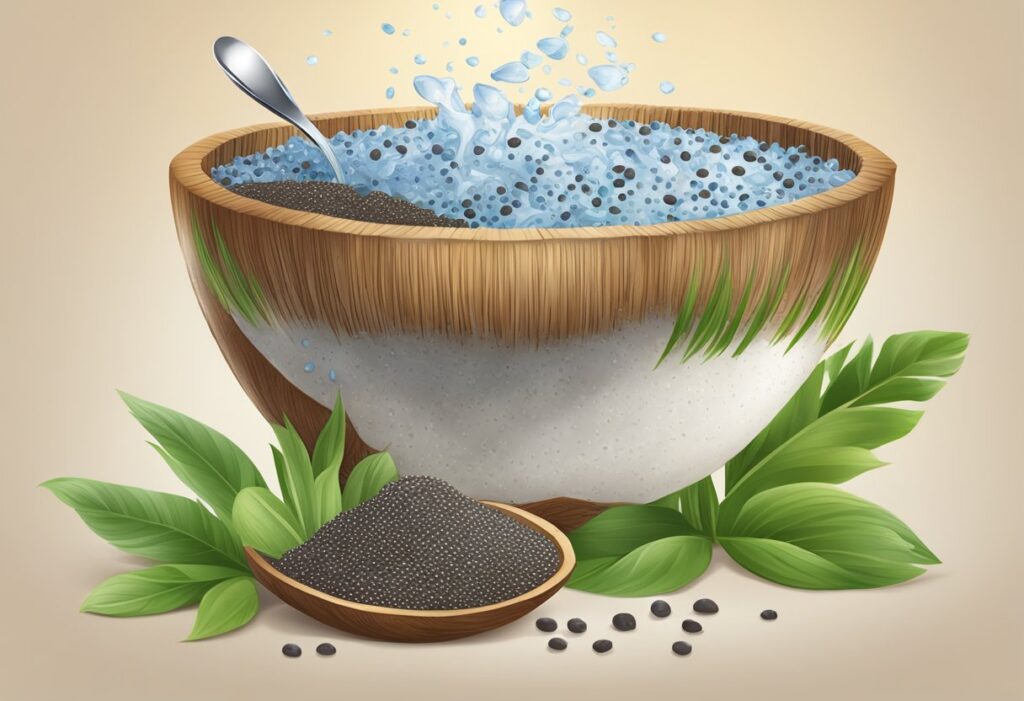
Chia seed pudding is a great way to make coconut water taste better while also getting a healthy dose of fiber. Chia seeds are packed with fiber, which can help keep you feeling full and satisfied. Plus, they’re a good source of omega-3 fatty acids, which are important for heart health.
To make chia seed pudding, you’ll need chia seeds, coconut water, a sweetener of your choice, and vanilla extract. Here’s how to do it:
- In a bowl, mix together 1/4 cup of chia seeds and 1 cup of coconut water. Stir well to combine.
- Add your sweetener of choice. You can use honey, maple syrup, agave nectar, or any other sweetener you like. Start with 1-2 tablespoons and adjust to taste.
- Add a splash of vanilla extract for flavor. Stir well to combine.
- Cover the bowl with plastic wrap and refrigerate for at least 2 hours, or overnight. The chia seeds will absorb the liquid and turn into a pudding-like consistency.
- Serve the chia seed pudding cold, topped with your favorite fruit or nuts.
Extra Tips:
- Don’t add too much sweetener as it can overpower the taste of the coconut water and chia seeds.
- You can also add other flavors to the pudding, such as cocoa powder or cinnamon.
- Be sure to stir the mixture well before refrigerating to ensure the chia seeds are evenly distributed.
- Chia seed pudding can be stored in the refrigerator for up to 5 days.
12. Garnish With Edible Flowers
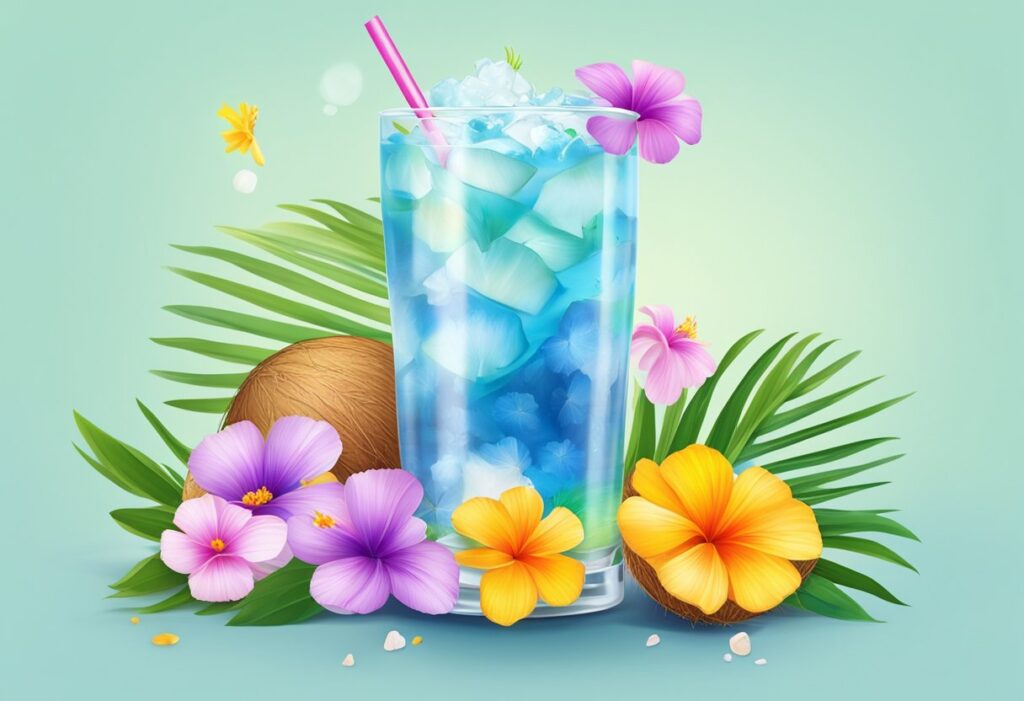
Garnishing coconut water with edible flowers is a simple way to add a touch of elegance and color to your drink. Edible flowers are not only beautiful, but they can also brighten and enhance the flavor of your coconut water. Edible flowers are flowers that are safe to eat and do not contain any harmful chemicals. Some common types of edible flowers include roses, lavender, and violets. These flowers are often used as a garnish in dishes to add color and texture.
Garnishing your coconut water with edible flowers not only adds visual appeal but also enhances the flavor. Edible flowers can add a subtle floral taste to your drink, making it more refreshing and enjoyable. Additionally, edible flowers can provide a unique texture to your drink, making it more interesting to consume.
To garnish your coconut water with edible flowers, follow these simple steps:
- Choose your edible flowers. Make sure the flowers are fresh and free from any chemicals or pesticides.
- Wash the flowers gently with water and pat them dry with a paper towel.
- Place the flowers on top of the coconut water.
- Serve and enjoy!
Extra Tips
- Do not use flowers that are not edible. Some flowers may look beautiful, but they can be harmful if consumed.
- Do not use flowers that have been sprayed with pesticides or other chemicals.
- Use edible flowers sparingly. Too many flowers can overpower the flavor of your drink.
- Experiment with different types of edible flowers to find the ones that complement the flavor of your coconut water best.
By following these simple steps, you can easily garnish your coconut water with edible flowers and elevate its taste and appearance.
